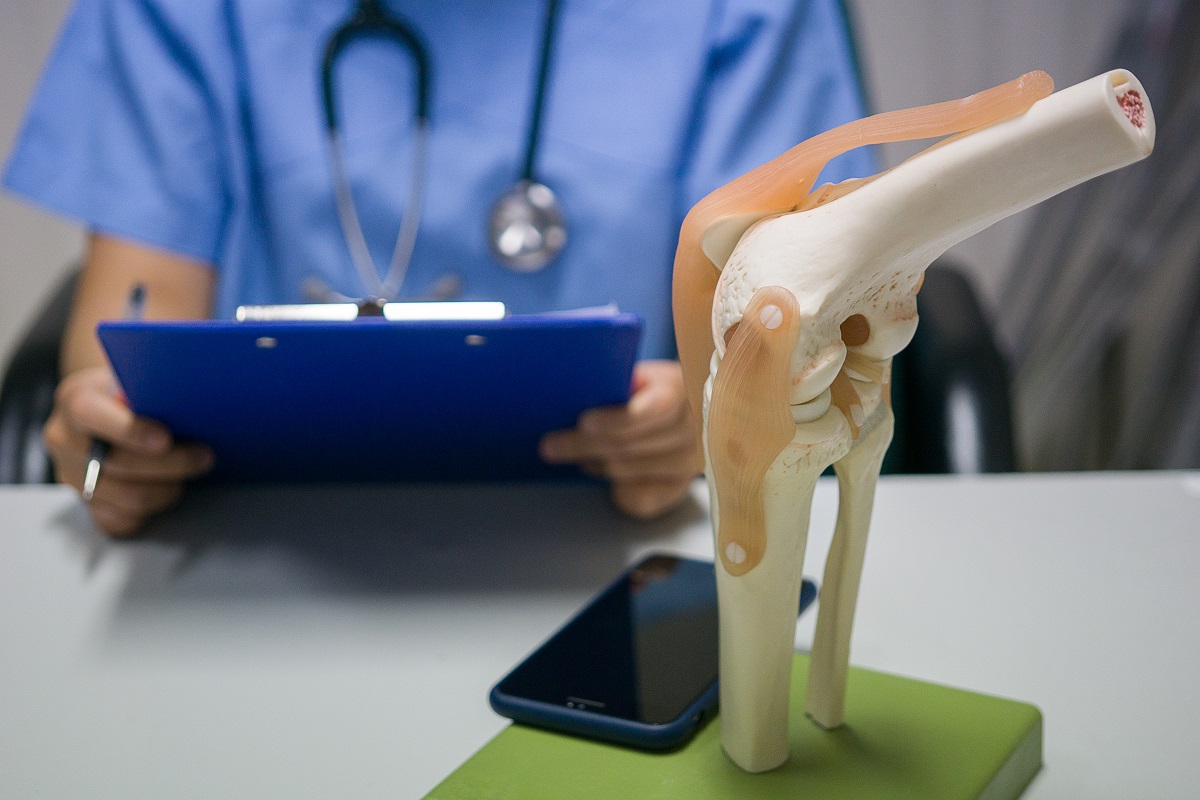The 7 Best U.S. Medical School for Orthopedic Surgeons (2023 Updated)
Orthopedic surgeons treat patients who suffer from various musculoskeletal problems or injuries. An orthopedist literally means “one who treats bone disorders.” They perform surgical procedures on broken bones, torn ligaments, and injured joints. In addition, they provide care for other orthopedic-related conditions like arthritis.
There are several schools that offer an M.D. degree, as well as training for orthopedics. Real-world experience is as important as theoretical knowledge. That’s why we only picked schools affiliated with hospitals. This way, students will get internships and on-the-job training.
In this article, we will see what are the top orthopedic surgeon schools, and what makes them so. You’ll see the usual elite medical schools, and a couple of surprising names.
How to Become an Orthopedic Surgeon
Entering the medical profession is a long and complicated process. But you shouldn’t feel intimidated. If you follow the steps outlined in this article, you’ll become an orthopedic surgeon.
It’ll take lots of hard work and money. Therefore, you must be absolutely, categorically, unquestionably sure you want to become an orthopedic surgeon before enrolling. It’s a career path for the strong-willed. You will have days when you regret your choices. You will have days when you’ll feel like the world is out there to get you.
Here is a list of factors that are important when you’re considering this career path.
Education
The first step to becoming an orthopedic surgeon is getting the right education. This means a bachelor’s degree in any field (preferably biology or chemistry), then four years in medical school. For those who wish to specialize as surgeons, they will need another three to five years in a residency program.
However, surgical education is expensive and can be beyond the means of many students from low-income families. That’s why it’s possible to do a “slow track” through medical school. Four years for those who wish to become primary care doctors first, followed by three more years to become surgeons.
This means that it is possible to graduate and become a doctor in seven years instead of the usual eight. This way, students can start earning money sooner.
Internships
After graduating from medical schools, orthopedic doctors will enter an internship program. Here, they’ll learn about their specialty while continuing with classroom sessions. Afterward, they will continue with a residency program of around three to five years. The duration depends on which area in orthopedics they wish to specialize in.
The last step is completing an extra one-year fellowship. It’s required before becoming certified by the American Board of Orthopedic Surgery (ABOS). Some surgeons complete an additional two or more fellowships instead of the board certification. Especially if they want to become academic orthopedic surgeons.
Residency Programs
A residency program in orthopedics is available in many hospitals, medical schools. Residents are paid for their services and given valuable experience. This is typically achieved through shadowing. Which means acting as a physician’s shadow. Once residents complete the program, they will be eligible to take the board certification examination. Which allows them to practice independently.
In the U.S., there are many residency programs in orthopedics. These are approved by the American Medical Association or Accreditation Council for Graduate Medical Education (ACGME), and included on a public database of accredited institutions. Students need to make sure they fulfill all requirements before applying. Some schools need specific undergrad majors, while others want students to get a certain percentage of questions correct on their entrance exams. Students can start applying for an orthopedic residency program during the fourth year in med school or after graduation.
Teaching hospitals is more popular among applicants and offers better training opportunities. Yet, some programs prefer residents with a private practice instead because they want their doctors to be independent. Applicants can check residency program rankings, which are based on the experiences of students and residents who were accepted by all U.S. residencies (there’s a separate ranking for teaching hospitals).
Orthopedic Schools—How to Pick the Right One
Med school choice is one of the most important ones in the life of any prospective student. So it’s perfectly normal to feel lost when it’s time to pick one. That’s why we compile this list.
Hospitals Affiliations
We mentioned internships and fellowships earlier in the article. You want to pick a school that gives you many opportunities to practice what they teach you. That means you should check the hospitals that are affiliated with medical schools.
If you want to become an orthopedic surgeon, it’s important to pick a school, so they have many teaching hospitals. This way students can gain hands-on experience and learn from experts in their field.
Locations
Many students prefer living near or even commuting back to their hometown. They can stay close to family and friends, which makes life much easier for them. That’s why it’s important that schools give students the option of taking part in rotations at teaching hospitals near home or school.
If you want to choose a program based on location, make sure there are enough options within commuting distance from your home.
Faculty and Research Opportunities
Each orthopedic school has a different number of faculty members who teach students throughout their coursework and research projects. You want to pick an institution that offers you the opportunity for hands-on experience with top experts in the field.
Finding out more about these opportunities can take some time since they’re not always advertised. You can contact faculty directly or read through their websites to find out more about research projects they are involved in.
Specialties and Sub-specialties
Some students want to know what sub-disciplines of orthopedics exist before applying for med school, while others prefer focusing on a single specialty during the application process.
If you want to specialize in a certain type of orthopedics, find out whether your school offers the right courses and research opportunities for that area. Or if there are enough physicians with expertise in that sub-discipline within commuting distance from campus or home.
There is no one perfect medical school for everyone—the right one will depend on your interests, career goals and preferences.
If you are interested in applying to an orthopedic residency program after graduating from medical school, apply to schools with an excellent reputation for this specialty. Also check if they offer any specific courses or training opportunities related to orthopedics before deciding.
Acceptance Rates
If you want to choose a school based on acceptance rates, then look at several factors.
For example, the number of applicants who apply each year and how difficult it is for them to get in can be an indicator of quality. A higher rate shows relatively less competition among students during the application process, which means there are more spots available for you.
Another way to measure quality is through the employment rate of students who graduate from medical school (after getting their degrees). If many graduates can find jobs in related fields, they learned in a good faculty and given enough research opportunities while at school.
Sending your application during admission season takes time and effort, but it’s worth the wait. Make sure you know all of your options before deciding on a school to apply to.
Costs
As mentioned, the cost of studying medicine is quite high. Some people even go into debt just to afford it all (student loans). However, there are some schools that offer tuition reimbursement programs for students. That’s why it is important to do your research before applying anywhere.
The cost of an orthopedic surgeon degree depends on which institution you are choosing to attend. For some private institutions, the tuition is over $50,000 per year. For community colleges, it can be as low as $12,000 per year.
If you’re strapped for cash, you could pick a school in an underserved area. The federal government will pay for part of your education through its National Health Service Corps program. You can find the costs of every medical school in the U.S. by looking at the interactive map provided by The American Medical Association. You can also search for tuition reimbursement programs through its website.
Editor’s note: While medical school is extremely expensive, you’ll easily be able to repay your loans when you work. The average yearly orthopedic surgeon’s salary is around $500,000. They could earn even more than an attending physician with several years of experience. It’s also possible to earn over half-a-million dollars if one has a private practice.
Finding the Right Orthopedics Program
One issue that many people have with applying for orthopedic surgery programs is that they don’t know where to look. There are so many colleges and universities, not to mention private centers. Applicants can use the AMA’s website to find accredited institutions in their state or look for reviews of programs on TopScopes.
Before doing this research, applicants should consider several factors that will help them decide where to apply. For example, it’s important to know the cost of living in different areas and compare this price with salaries. This is especially important if you’re looking for a cheaper place to live during residency.
Applicants should also consider which teaching hospitals are closer. Some students prefer large institutions where they can learn from more experienced doctors. Others prefer small hospitals because they offer more time with experienced surgeons.
The Top 7 Orthopedic Surgeon Schools: Detailed Reviews
The U.S. is chock-full of amazing medical schools. Yet, the demand for professionals keeps growing. The main reason for this is that getting into most of these schools is tough. Only the most exceptional students get admitted into them.
The acceptance rates are very low, and there are a few spots for students. The optimal learning environment for medicine is small classes, with a close student-teacher relationship.
Picking a school is complicated. That’s why we made this list of the top orthopedic surgeon schools in the United States.
George Washington University
- Type: Private
- Location: Washington, DC 20052
- Tuition: $63,920
George Washington University was founded in 1821 and is the largest private university in DC. The school has a main campus located mostly at Foggy Bottom, which sits on an 80-acre waterfront property overlooking the Potomac River.
The George Washington University Medical School was founded in 1824 and became part of GWU after WWII ended. It’s ranked as one of the leading orthopedic programs in the United States.
The school offers a joint M.D.-Ph.D. program for students interested in biomedical research after completing medical training. The average cost of attending George Washington University for an orthopedic surgeon degree is $63,920 per year.
This institution offers a pre-doctoral medical education program with the following specialties:
- Orthopedic Surgery
- Neurosurgery
- Emergency Medicine
The university also provides medical students with courses related to musculoskeletal diseases, physical examinations, imaging services and other topics. This is one of the best programs in the United States.
Johns Hopkins University
- Type: Private
- Location: Baltimore, Maryland 21218
- Tuition: $58,000
Johns Hopkins School of Medicine is ranked third in the nation. It was founded in 1876 and has a main campus at East Baltimore, near Johns Hopkins Hospital, which is one of the best hospitals in Maryland.
The university’s orthopedic surgery department offers students with an M.D., Ph.D. or D.O. degree the opportunity to earn a combined master’s and doctorate. This adds two years of research training after medical school.
The teachers are expert practitioners with real world experience in orthopedic surgery. This allows them to provide students with a comprehensive education that goes beyond theoretical knowledge.
The average cost for attending Johns Hopkins University as an orthopedic surgeon graduate or resident is $58,000 per year. This includes tuition, housing and meals offered as part of a comprehensive fee.
University of California – San Francisco
- Type: Public
- Location: San Francisco, CA 94143
- Tuition: $11,442
The UCSF Medical Center was funded in 1864 and has since become one of the leading hospitals on west coast for research and patient care. It’s at Parnassus Heights near Golden Gate Park, but it also has campuses in China and South Korea.
The orthopedic surgeon program at UCSF was established in 1970 and is now ranked among the best medical schools for orthopedics.
The school offers several residency programs options to students who completed their undergraduate studies at top universities throughout the country. This includes:
- General Surgery
- Orthopedic Surgery (M.D./Ph.D.)
The average cost of attending this university for an orthopedic surgery degree is $24,000 per year. This includes living expenses. The UC system requires that students pay supplemental fees besides tuition and other expenses. This means they will have a total debt of about $30,000.
Stanford University
- Type: Private
- Location: Stanford, CA 94305
- Tuition: $68,000
Stanford University was established in 1885 and has a main campus at Stanford, California. It’s one of the leading research universities in the country and has an internationally recognized medical school.
The orthopedic surgery program at Stanford was founded in 1969. It offers students with a combined M.D., Ph.D. or D.O degree three options for completing their residency training:
- General Surgery
- Orthopedics
- Neurosurgery
The university also offers a combined M.D.-Ph. D program for students interested in biomedical research. The average cost of attending Stanford University as an orthopedic surgeon graduate or resident is $68,000 per year.
University of Rochester Medical Center
- Type: Private
- Location: Rochester, NY 14642
- Tuition: $59,100
The University of Rochester Medical Center was established in 1925 and is in Rochester, New York. It has an internationally recognized medical school that offers students with M.D., D.O or Ph.D. degrees the opportunity to complete their residency training as part of a combined program.
Its orthopedic surgery department offers different residency options to students who completed their undergraduate studies at top universities throughout the country.
The University of Rochester Medical Center is a premier research university with a phenomenal orthopedic surgery program. It offers students the chance to complete their residency training in different specialty areas. The faculty is world class, and the school has a strong research presence that helps it attract top medical student graduates from across the country.
In addition, students at this school have opportunities for hands-on experience in the operating room, which helps them get up to speed more quickly when they begin their residency training.
Harvard University
- Type: Private
- Location: Cambridge, MA 02138
- Tuition: $69,000
It would be weird to make a list of best medical schools in the United States—heck, in the world—without mentioning Harvard. This Massachusetts based university is recognized as one of the top research universities in the world.
It has an internationally recognized medical school that offers students with M.D., D.O or Ph.D. degrees the opportunity to complete their residency training.
Internships at Harvard Medical School range from three to six months. Demand for positions varies from month to month, but it’s not unusual for there to be a backlog of applicants. In order to be eligible, the applicant must have completed a year of premed courses. In addition, an internship requires a one-year commitment. Applying early is advisable so interviews can be scheduled in advance and before all positions have been filled.
The average cost of attending Harvard University as an orthopedic surgery graduate or resident is $69,000 per year.
University of Pennsylvania—Perelman
- Type: Private
- Location: Philadelphia, PA19104
- Tuition: $61,586
Rounding up our list of the best medical schools for orthopedic surgeons is University of Pennsylvania Perelman. This Philadelphia-based university offers students with M.D., D.O or Ph.D. degrees a combined program for residency training in their orthopedics department.
In addition, they offer an integrated five-year Ph.D. and medical degree to students interested in biomedical research. The medical school is one of the oldest in America and has a reputable orthopedic surgery department which offers students with different options for residency training.
Perelman is an elite school for orthopedic surgeons. It offers students with different options for residency training and its research presence is impressive. The faculty are world class orthopedic surgeons that attract top medical student graduates from across the country to attend their university.
The costs associated with attending this school include tuition, housing fees, books, etc., which comes up to an average of $71,000 per year.
Conclusions
Becoming an orthopedic surgeon is a long but rewarding endeavor. You will improve the lives of many people during your career. Yeah, the money is good, but you’ll notice soon you care more about the fact you’re fixing people’s bodies. Their gratitude for your service will tramp all money in the world.
If you’re in only for the money, you’ll probably find it hard to enjoy the long academic path. Becoming a doctor takes years of full-time study.
That said, if that’s something you are 100% committed to do, then it’s your time to shine.
Also Read:







